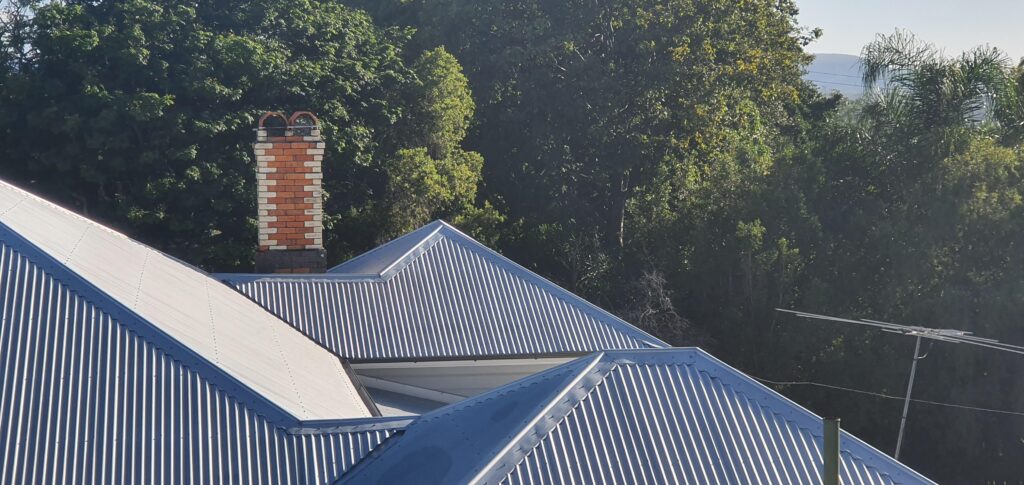Choosing a roof colour is an important but daunting decision. It can dramatically impact the aesthetic of your home’s exterior, affect the value of your home, and even influence your energy bills. Read our guide on what you need to consider when choosing your roof colour so that you can make an informed decision.
Research Council Regulations
You might not be aware that many councils have some level of control over the colour of your roof and other parts of your external home. In 2021, a NSW council mandate banned dark coloured roofs in an effort to help in reaching its goal to net zero emissions by 2050. Similar requirements for solar–reflective coloured roofs can also be found in the Sunshine Coast’s Sustainable Design Code. There will also be restrictions in your choice of colour for heritage listed properties so it’s best to know the rules.
Find Local Examples
Make your decision easier by looking at examples of your chosen roofing company’s past work as well as roofs painted in the colour you are considering. This can help you visualise what your home would look like by comparing it to properties in the same suburb.
Complementary vs. Contrasting Colour
There are two basic design rules to follow when selecting a roof paint colour. You can choose a colour that complements your existing colour scheme or one that is contrasted and stands out. A complementary colour scheme will blend in with your house exterior and won’t draw attention to the roof – for example, a red roof paint for a red brick house. On the other hand, a contrasting colour will highlight the roof and change the overall look of your house – for instance, a green roof paint for a red brick house. A contrasting colour scheme will achieve a more visually interesting, sophisticated look. You can see good examples of both design rules but your choice will come down to personal taste.
Heat Reflective Roof Colours
Another consideration is how much heat your roof will be exposed to. If you live in an area with harsh sun and sweltering summers, it would be wise to select a light colour that reflects heat. This can make a big difference in reducing the temperature indoors, saving you money on your energy bills and reducing your carbon footprint. If a darker colour has taken your fancy, be aware that roofs painted with dark colours have been known to reach up to 80 degrees! Your energy bill could be reduced by as much as 40% by simply choosing a lighter roof colour. White will absorb the least heat of all colours, but other good options include beige, light brown, light grey, light green and light blue.
Other Considerations
Your surroundings will affect which colour roof will suit your home. Consider how much vegetation you have near you, whether you live in an industrial area or whether your suburb has a general style you want to match. For example, if you live in a heritage area, a dark grey roof might stand out too much.
Your home’s architectural style will also play a part. Is your property a modern apartment, a Queenslander, or a heritage build? If you have an older style house, then it would be wise to choose warmer heritage colours like reds and greens, rather than modern charcoal greys and steel blues.
The cost & longevity of materials should also be considered. Some paints have heat reflecting properties that may allow for a darker colour while keeping temperatures low. Higher quality paint will last longer without needing to be repainted. Speak with your roofing consultant to decide the best materials for your project needs and budget.
Final Thoughts
Now you have a good starting point for selecting a roof colour that suits your house and its surrounds. If you’re in Queensland, don’t hesitate to contact Roof Knight for roof painting services in Brisbane, as well as Ipswich roof painting. We can provide you with expert recommendations and advice for selecting the perfect metal or tile roof colour for your home.

